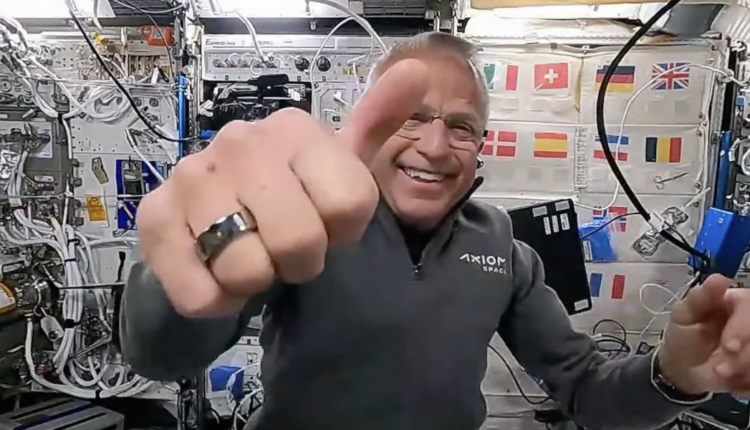Thirty-nine minutes before being launched into space, all John Shoffner had to do was sit still in his launch seat while millions of pounds of propellant were filled into the rocket. Sitting there, he was suddenly confronted with a thought: What does a person do with 39 minutes of absolute stillness before one of the most intense moments of their life?
Even a well-trained astronaut could use those 39 minutes to panic. But Shoffner found himself becoming reflective, he said, in a Men’s Health Friday Sessions chat he did—from outer space—with Gregory Scott Brown, M.D.
“It was pretty strong,” Shoffner said. “You bring all of the training and focus to a point where I felt 100 prepared—enough so that I felt like I could take a nap. That I could lay there and think about anything previous in my life and about the training—the highs and lows, people in my life, the things I’ve experienced that were positive and otherwise. I had these wonderful moments of being able to drift and think for over 30 minutes before leaving the planet.”
More From Men’s Health

And then he did. Shoffner left the planet, catapulting toward the International Space Station (ISS) as part of Axiom Space’s Ax-2 mission, which is the second-ever private mission to the space station. While floating around the ISS, Shoffner joined Men’s Health to talk about his journey to space. Shoffner a the pilot on the Ax-2 mission with a three-person crew. They blasted into space on Sunday, May 21 from NASA’s Kennedy Space Center in Florida. The crew’s mission is set to last ten days, eight of which will be spent on the ISS.
For Shoffner, it’s a lifelong dream realized. Shoffner has been a space enthusiast since childhood, starting a young astronauts club as a child during the Space Race. Instead of focusing on space flight in his adult life, Shoffner honed his piloting talents here on Earth. He has been a pilot since he was 17, accumulating more than 8,500 flight hours. He’s been a veteran of airshows for more than 25 years, holding commercial, instrument, single-engine and multi-engine ratings in both land and sea aircraft and helicopters, along with ratings in ex-military jets and high-performance radial engine aircraft.
But piloting wasn’t Shoffner’s professional career. He was at the forefront of the fiber optic telecommunications industry via his company Dura-Line Corporation before leaving the company as CEO in 1997.
“I [recently] thought back to everything I’ve done in my life, and almost every single aspect or thing I’ve done is a component that prepared me adequately for this,” Shoffner said of his space flight.
Fear? Not really a thing, he says. When you train for what you’re doing, whether that’s skydiving, piloting in air shows, cycling across the US without support (all of which he’s done), you’ve more or less mitigated any risks that you can, trained for anything that could go wrong, and you just focus on what you’ve been trained to do.
As a passionate advocate for STEM education, Shoffner is using the Ax-2 mission to highlight the newest era of increased space access. While on the ISS, he and his crewmates will do scientific research, technology demonstrations, and various outreach and educational events aimed at empowering educators and inspiring students.
Many children, like the child Shoffner was, dream of becoming an astronaut. Few ever get to realize that dream. In that way, Shoffner considers himself lucky, knowing his time at the ISS came exactly at the right moment.
“Everything has its place in time,” he said, before letting himself float around toward the end of the conversation. “I did not become an astronaut as I probably would have liked to in the beginning. But I love space so much that the first moment of opportunity that private astronauting and commercial astronauting was available, I’m in. Here I am…finally.”
Watch the full conversation with Shoffner here:
Katie Dupere is an editor and writer in New York City specializing in identity, internet culture, social good, lifestyle and beauty topics.


Comments are closed.